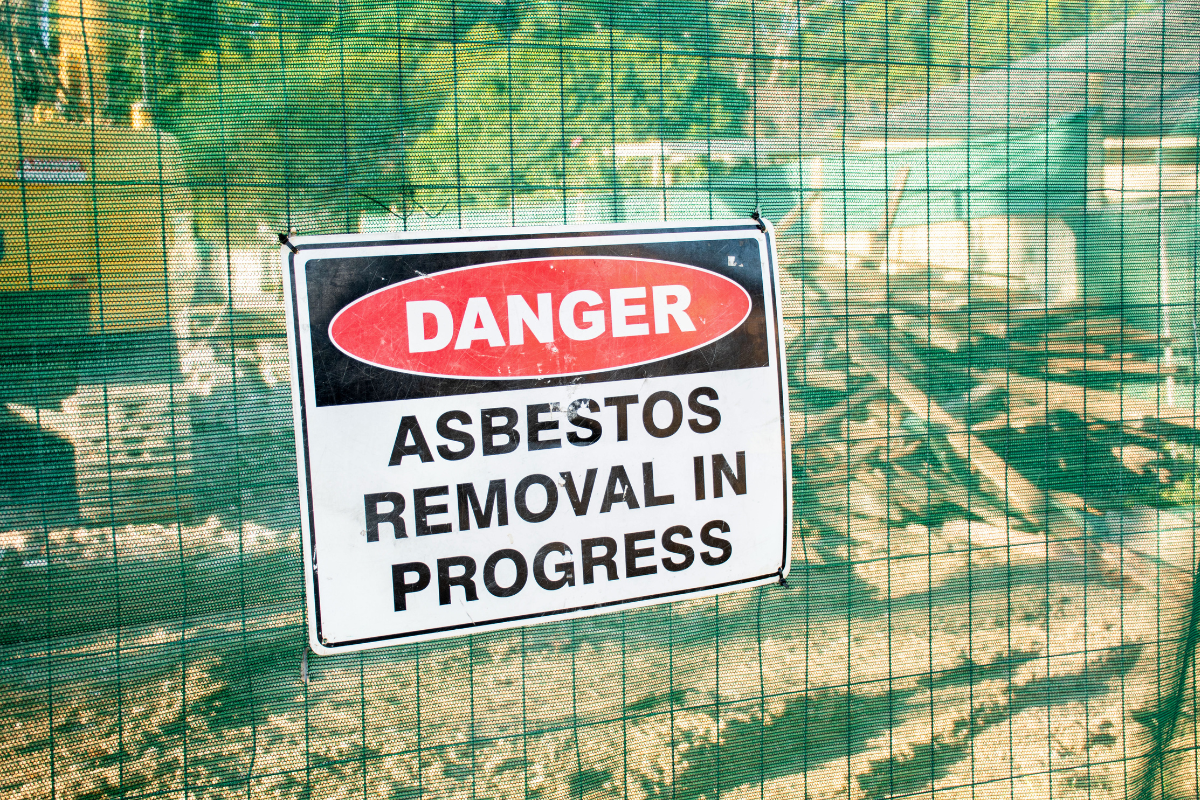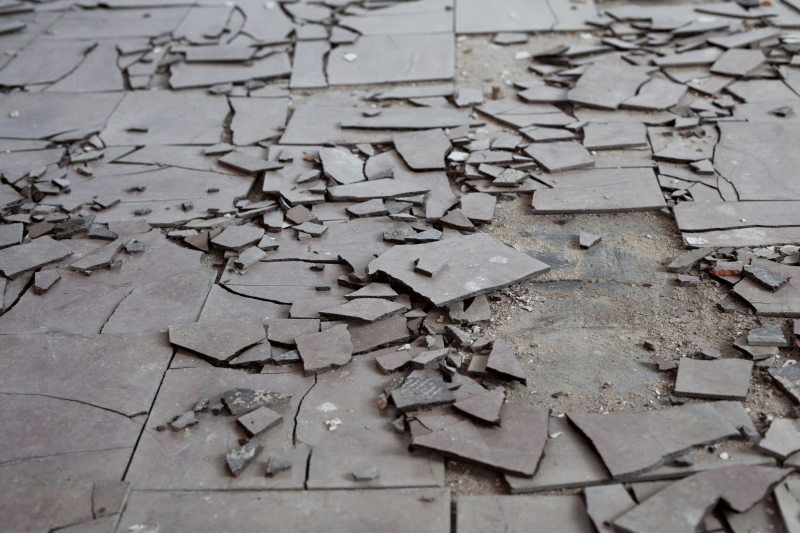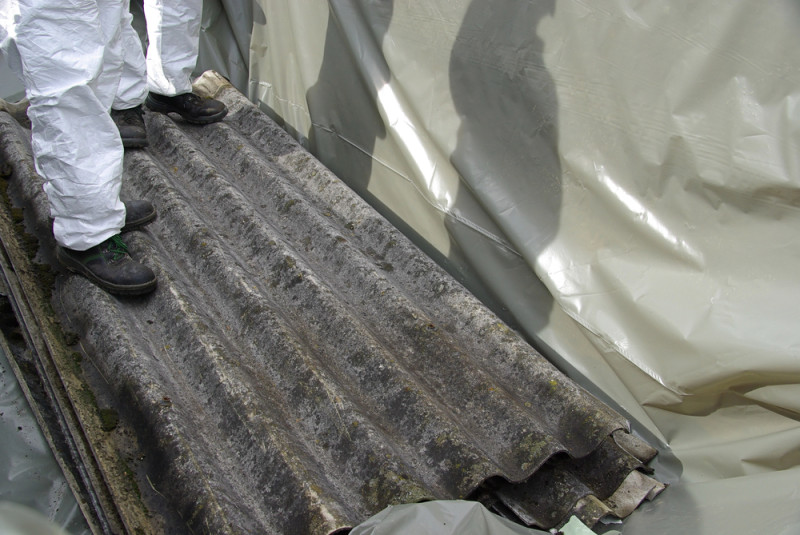In the pursuit of safety and environmental health, understanding the intricacies of asbestos in soil is paramount. Asbestos, a notorious mineral once celebrated for its versatility, presents a hidden peril when found lurking in the very ground beneath our feet.
In this blog, we delve into the depths of asbestos contamination in soil, exploring its appearance, risks, asbestos removal process, management strategies, and regulatory frameworks.
Do you require asbestos removal services? Get in touch with the team at Rapid today.
Understanding asbestos in soil
Asbestos in soil poses a significant risk due to its fibrous nature. Unlike solid asbestos materials used in buildings, asbestos in soil is not always easily recognisable. It can exist in various forms, such as friable asbestos fibres (airborne fibres), particles, or even larger non friable asbestos fragments. These hazardous fibres can become airborne when disturbed, potentially leading to inhalation and subsequent health issues.
The type of buried asbestos material commonly found in soil on asbestos-contaminated sites is typically amphibole asbestos. This includes varieties such as crocidolite (blue asbestos), amosite (brown asbestos), and tremolite asbestos. These amphibole fibres are more durable and resistant to breakdown compared to chrysotile (white asbestos), making them more likely to persist in the soil over time.

Sources of asbestos contamination in soil
The majority of asbestos found in soil across various regions in Australia can be attributed to four primary sources:
- Buildings constructed with asbestos containing material that were not properly demolished and disposed of, leading to contamination of the surrounding soil.
- The use of asbestos-contaminated soil as topsoil or landfill, contributing to the spread of friable asbestos fibres in the environment.
- Construction practices involving asbestos-containing materials contribute to contamination. As these materials deteriorate over time, asbestos fibres can leach into the surrounding soil, infiltrating gardens, playgrounds, and other residential or recreational areas.
Buried asbestos materials, such as old sheds, chicken coops, and fences, are often found during subdivisions or construction works. If you are undergoing subdivision or construction work on a property and not sure if bonded asbestos is present in the soil? Contact our team today.
Health and environmental impacts
Exposure to asbestos in soil carries severe health risks. Long term inhalation of friable asbestos fibres can lead to respiratory ailments such as asbestosis, lung cancer, and mesothelioma.
Moreover, the environmental consequences of asbestos contamination are equally concerning, as it can disrupt ecosystems and harm wildlife.
Regulations and guidelines for managing asbestos in soil
In Australia, management of asbestos in soil is governed by strict regulations and guidelines set forth by regulatory authorities. These measures are crucial for safeguarding public health and environmental integrity.
More specifically, The Government of Western Australia, Department of Health, has established a comprehensive Guideline for the Assessment, Remediation and Management of Asbestos Contaminated Sites. This addresses the risks associated with asbestos contamination in soil and the affected land. Adherence to these guidelines is essential for individuals and organisations involved in activities that may impact soil quality, ensuring proper handling, remediation, and disposal of asbestos-contaminated soil to mitigate risks to both human health and the environment.
Note that these guidelines are to be used in conjunction with*:
- National Environment Protection Council, 1999, National Environment Protection (Assessment of Site Contamination) Measure, Environment Australia: Canberra http://www.nepc.gov.au/nepms/assessment-site-contamination
- Assessment and Management of Contaminated Sites (DWER, 2021), https://www.wa.gov.au/system/files/2023-05/guideline-assessment-and-management-of-contaminated-sites.pdf
* As of June 2024.
Remediation techniques for asbestos-contaminated soil
Managing asbestos in soil necessitates specialised remediation techniques. These may include encapsulation, where the asbestos is sealed within a protective material to prevent fibre release, or removal/excavation and disposal of contaminated soil in accordance with regulatory standards.
Remediation efforts must be conducted by trained professionals equipped with the necessary expertise and safety protocols.
Prevention and safety measures
Preventing asbestos contamination in soil begins with awareness and vigilance. Property owners should identify and assess potential sources of asbestos, especially in older buildings or areas with industrial history. Regular monitoring and testing of soil quality can detect asbestos early, enabling prompt remedial action. Furthermore, implementing proper safety measures, such as wearing protective gear and following established protocols during construction or excavation activities, is essential for minimising exposure risks.
The threat of asbestos in soil demands attention and proactive management. By understanding its nature, origins, and associated risks, coupled with adherence to regulatory guidelines and implementation of effective remediation and prevention strategies, we can mitigate the hidden dangers lurking beneath the ground and safeguard both human health and the environment.
Take action with Rapid Asbestos Removals
At Rapid Asbestos Removal, we specialise in identifying and safely removing asbestos from your property. Our experienced team follows stringent safety protocols and adheres to all regulatory guidelines to ensure your property is asbestos-free and safe.
Concerned that your property may have asbestos materials in the soil? Get in touch with us at Rapid Asbestos Removals today.
Frequently asked questions
Asbestos in soil may appear as small, white, fibrous strands or powdery substances mixed within the soil. In garden soil, asbestos contamination might manifest as discoloured patches or irregular textures. While it's not always easy to spot, professional testing is crucial to confirm the presence of asbestos in soil.
Yes, asbestos can be found in garden soil, especially if the garden is near older buildings or areas with a history of asbestos use. Contaminated fill material and improper disposal practices can introduce asbestos fibres into garden soil.
Managing asbestos in soil requires professional assessment and handling. Preventative measures include soil testing, proper containment, and working with a licensed asbestos assessor and removal contractor to ensure safe excavation and disposal.
Yes, asbestos is a naturally occurring mineral composed of thin, fibrous crystals. It is found in rock formations worldwide and was widely used in various industrial and construction applications due to its durability and resistance to heat and chemicals.


